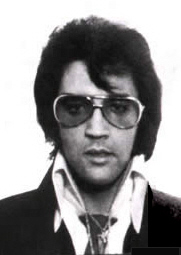In April, I was given an advanced reader copy of Delivering Happiness by Tony Hsieh on the condition that I give it an honest review. Delivering Happiness is being released today and here is my review.
Tony Hsieh was one of the founders of LinkExchange, which sold to Microsoft for $256 million in 1999. Shortly thereafter, he became affiliated with Zappos.com and ended up as CEO. Zappos.com was later sold to Amazon.com as a “wholly-owned subsidiary” in a stock-exchange transaction valued at $1.2 billion.
Delivering Happiness is his story and that of the creation and management of Zappos.com.
The book is divided into three sections: Profits, Passion, and Purpose.
Section 1 is largely autobiographical. It tells the story of Hsieh’s business ventures all through his life, from a failed worm farm to a failed newspaper to an abandoned greeting card business. Obviously the business of having children sell greeting cards had improved between his childhood and mine, because, when I did it, there were many more choices than just Christmas cards. I still have both the telescope and microscope I earned selling overpriced greeting cards. An important lesson imparted is that past success is not an indicator of future success. Different personalities, goals, and economics can change the result of two nearly identical activities.
Hsieh tells the story of the excitement of building LinkExchange and how he knew it was time to move on when the excitement faded, largely due to a surprising change to the corporate culture. After leaving, he spent some time just living and reviewing his past activities. He came to the conclusion that the happiest times of his life didn’t involve money. Doing things right beats strictly maximizing profits. Taking business lessons from the poker table, he reminds his readers that the Right Decision may lose sometimes, but it is still Right.
When he gets into building his business on a foundation of relationships, he is reminiscent of Keith Ferrazzi. Don’t network. Build your relationships based on friendship and let the friendship be it’s own reward. The rest will follow.
Section 2–while denying it was intended–reads heavily like marketing copy. It is almost entirely about how wonderful Zappos.com is to work for and with. I think it is fascinating to read about how successful businesses are built and how the corporate culture comes with that, but it’s not for everyone. The important points from this section include being open to necessary change without being reckless and their insistence on transparency. I don’t believe in hoarding information and it’s wonderful to hear others feel the same way. They go as far as giving all of the profitability and sales numbers to the vendors, live, which makes the vendors feel respected and gives the vendors an opportunity to suggest future orders based on past trends. That saves time and effort for the buyers at Zappos.com.
Section 3 attempts to tie the business lessons to life lessons and almost–but not quite–succeeds. After discussing differences in vision and alignment between the Zappos executives and the board, he talks about his growing speaking arrangements. When he started, he nervously memorized his presentations, resulting in mediocre speeches. When he discovered his “flow”, it all improved. His method of writing and speaking involves being passionate about his topic, telling personal stories, and being real. When he adopted that plan, his speaking became natural and popular.
In the final chapter, Hsieh actually discusses happiness. His equation is Perceived Control + Perceived Progress + Connectedness + Vision & Meaning = Happiness. He works to apply all of this as a part of the corporate culture at Zappos, giving the employees a measure of control over their advancement, duties, and culture. The employees help write the Corporate Culture book, which is given to all new hires and vendors. I intend to get a hold of a copy in the near future. It sounds like a fascinating read.
He also addresses the three types of happiness: Pleasure, Passion, and Higher Purpose, also described as Rockstar, In The Zone, and Being a Part of Something Bigger. The first is fleeting, and the last is long-lasting.
Would I recommend the book?
Yes. I found Delivering Happiness to be incredibly interesting, but, if you have no interest in how a successful-but-not-traditional company is built and run, or if you are bored by successful people, this book is not for you. The book is largely autobiographical and a case study in the success of Zappos.com. If that sounds remotely interesting, you will not regret reading this book.
Now, the fun part. I was given two copies of the book. The first one is becoming a permanent part of library. The second is being given away.
Giveaway
There are three ways to enter:
1. Twitter. Follow me and post the following: @LiveRealNow is giving away a copy of Delivering Happiness(@dhbook). Follow and RT to enter. http://bit.ly/czd31X
2. Become a fan on Facebook and post about the giveaway.
3. Post about the giveaway on your blog and link back to this post.
That’s 3 possible entries.
Next Sunday, I will throw all the entries in a hat and draw a name.
Future Reviews
If you have a book you’d like me to review, please contact me.



